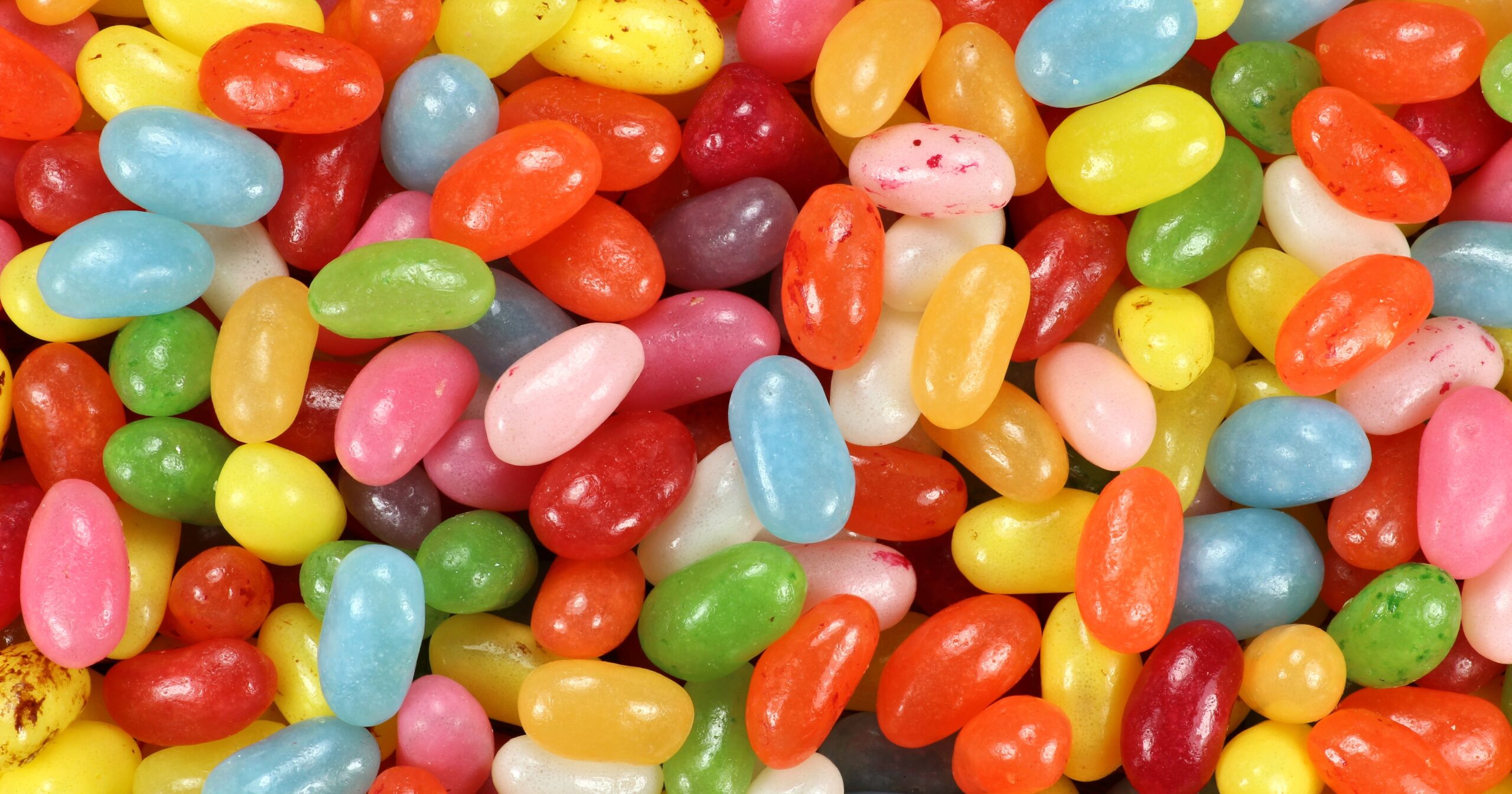Jelly beans will look very different. On January 15, the Food and Drug Administration (FDA) officially revoked its permission of red dye no. 3 in food because of its potential cancer risk. “The ban was influenced by studies showing that high doses of Red No. 3 caused cancer in lab rats,” said Julie Chapon, CEO of the French food app, Yuka. Now that the US has finally put its foot down on the controversial food dye, what changes should we (actually) expect to see?
Despite the recent ban, Red No. 3 been on the chopping block for several years. It was originally banned from cosmetics in 1990 due to similar health concerns, and other countries (such as Australia) have also banned it entirely. “While the science surrounding its effects on humans is still debated, The Delaney Clause requires action when any additive has been shown to cause cancer in animals,” explains dietitian Melanie Murphy Richter, MS, RDN. In fact, this exact clause proved to be the ultimate turning point in the FDA’s final decision.
As for what’s next, prepare for your groceries to look a lot less artificial (though that’s not necessarily a bad thing). For more information on the ban on Red Dye No. 3, read on to find everything from safer alternatives to expert predictions about the future of food.
Experts featured in this article:
Julie Chapon is co-founder and CEO of French food app, Yuka.
Melanie Murphy RichterMS, RDN, is a Registered Dietitian Nutritionist and Director of Communications at L-Nutra, Inc.
Which foods contain red dye No. 3?
Red No. 3 is mainly used for artificial coloring in sweets and pastries. Think cake (including mixes like Pillsbury Funfetti Strawberry Cake), cupcakes and candies (like Brach’s Candy Corn and Jelly Belly). You should also watch out for some strawberry-flavored milks, protein shakes, puddings, frostings, maraschino cherries, and fruit cocktails. Red Dye No. 3 is also commonly used in Pez, strawberry ice cream, toaster pastries, marshmallows, and even medicines like gummy vitamins.
Why was red dye #3 banned?
Contrary to popular belief, Red Dye No. 3 (also known as erythrosine or FD&C Red No. 3) has not been shown to cause cancer in humans. Still, several studies have linked high doses of Red No. 3 to cancer in laboratory rats. And according to Delaney clause — a law passed in 1960 — the FDA is prohibited from approving food or color additives if they have been shown to cause cancer in humans or animal.
To this point, Chapon says in 2022, experts and public health organizations called for the removal of Red Dye No. 3, arguing that its approval violated the Delaney Clause. The FDA cites the same petition in its announcement, but it clarifies that humans are typically exposed to much lower levels of Red Dye No. 3 than the lab rats studied by researchers. “The way FD&C Red No. 3 causes cancer in male rats does not occur in humans,” the FDA wrote. “Studies in other animals and in humans did not show these effects; claims that the use of FD&C Red No. 3 in food and ingested drugs exposes humans to risk are not supported by available scientific information.” While it’s good to understand the full context, it’s still unlikely we’ll be stocking up on strawberry milk any time soon.
Is Red Dye No. 3 really dangerous?
“Red dye No. 3 has raised concerns for years, as it has been shown to cause cancer in animals at high doses,” says Richter. With that in mind, the risk to humans is still highly debated. “The main reason for the ban on Red Dye No. 3 is the suspected risk of cancer, especially thyroid tumors identified in animal studies,” explains Chapon. “In addition to the suspected risk of cancer, this dye is suspected to contribute to hyperactivity and behavioral disorders in children.” The dye can also contribute to problems with testicular function and fertility.
In the long run, Chapon is encouraged by Red No. The 3 ban. “It could set a precedent for further regulation of food ingredients and encourage manufacturers to adopt safer, natural alternatives,” she explains. “The result could be a long-term reduction in consumer exposure to potentially harmful substances in processed foods.”
Safer food coloring option
“There are safer alternatives, but it’s important to look beyond simply replacing one artificial colorant with another,” says Richter. It includes Red Dye No. 40, which she says has its own set of controversies (spoiler: it’s the color that makes Doritos and Flamin’ Hot Cheetos so impossibly vibrant). In general, Richter recommends natural dyes like beetroot, hibiscus or spirulina — many of which contain added nutrients and antioxidants, although they don’t produce the same vibrant red color. Chapon agrees that foods with natural coloring, such as beet extract or fruit-based anthocyanins, can provide similar coloring without the associated health concerns (just don’t expect the exact same intensity).
What will food look like now?
We know you think so. Now that Red No. 3 is banned, what will our pantries look like without it? “We’re likely to see fewer foods with that eye-catching, artificial cherry red — something I don’t think many people will miss,” Richter says. According to the FDA, companies have until 2028 to reformulate their products without Red No. 3, so don’t expect everything to change right away. “Food products like candy and baked goods are likely to transfer to natural dyes, leading to softer, less vibrant hues,” says Chapon.
Even if you have some deep nostalgic ties to your colorful snacks, there’s no need to panic. “These changes in appearance reflect a broader industry shift toward security and transparency,” explains Chapon. “While some adjustments may be noticeable to consumers, the reformulation aims to improve confidence and health standards in the food supply.” And that’s something we can get behind. . . even if we have to sacrifice some colorful cupcakes in the process.
Chandler Plante (she/her) is the assistant health and fitness editor for PS. She has over four years of experience in professional journalism, and has previously worked as an editorial assistant for People magazine and contributed to Ladygunn, Millie and Bustle Digital Group.





